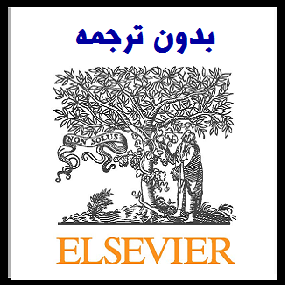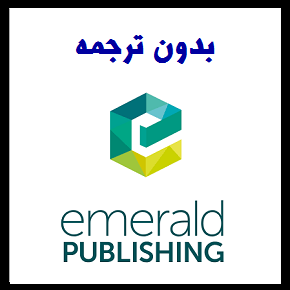مقاله انگلیسی ترکیبی از تولید برق پایدار برای ایران (2018 الزویر)


| عنوان فارسی مقاله | ترکیبی از تولید برق پایدار برای ایران: رویکرد فرآیند شبکه تحلیل فازی |
| عنوان انگلیسی مقاله | Sustainable electricity generation mix for Iran: A fuzzy analytic network process approach |
| فهرست مطالب | Highlights Abstract Graphical abstract Keywords Introduction Energy status of Iran Electricity generation in Iran Literature review Methodology Proposed fuzzy ANP model Conclusion and policy implications Acknowledgement References |
| نمونه مقاله انگلیسی | ABSTRACT
Electricity supply in Iran has been heavily dependent on fossil fuels. In light of the government’s emphasis on reducing the consumption of conventional energy sources, combined with the worldwide attention to environmental issues, it is necessary for Iran to revise its current energy mix policy in power sector and move towards a more diversified energy portfolio. This paper aims to contribute to energy management studies through developing a new framework for assessing the mix of energy sources for producing electricity in Iran from the perspective of sustainable development. Multiple qualitative and quantitative criteria with conflicting nature need to be taken into consideration for evaluating competing energy options for electricity production in Iran. In order to address this issue and also to consider the complex interdependence among criteria and alternatives, this paper adopts a fuzzy analytic network process (FANP) method. Seven criteria and nineteen subcriteria are defined and structured in the form of benefits, opportunities, costs and risks (BOCR) to evaluate the share of six energy resources. The results indicate that the best energy mix for the power sector in Iran is as follows: renewable energies (31.6%), natural gas (25%), coal (12.3%), fuel oil (12.6%), nuclear (8.7%) and gas oil (9.7%). Introduction During the last 60 years, the global population has grown by the factor of 2.5, whereas the global primary energy consumption has increased by a factor of 4.5 [9]. Also, the worldwide demand for energy is expected to increase even more over the next 30 years [23]. A short glance at the world’s energy architecture reveals that fossil fuels have remained as the dominant sources of electricity generation. The extensive consumption of fossil fuels has had negative global consequences such as climate change, depletion of fossil energy resources, and environmental pollution. In this sense, electricity sector has been the focal point in mitigating these issues mainly for two reasons [105]: first, electricity sector, especially in developing countries, is often highly carbon-intensive and is considered as a major source of greenhouse gas emissions. Therefore, moving towards generating electricity in lower carbon intensity units is a highly effective emission reduction strategy. Second, electricity sector is a relatively easy target for mitigating environmental effects because it is a large and concentrated sector. In order to achieve long-term sustainable development and energy security, it is imperative for all the countries to diversify their energy portfolio and seek for exploiting a combination of various energy sources for generating electricity [53]; [109]. In fact, each source of energy has its own advantages and disadvantages and, as expressed by Li [53, p. 2240], “the dominance of a single energy source and system, no matter how ‘‘perfect’’ it might be at a time, would be unsustainable in the long run.” In this context, due to the large population and rapid economic growth of developing countries, their patterns of energy production and consumption might considerably affect the overall global energy consumption and environmental concerns. As a rapidly-growing developing country, Iran’s energy demand is continuously increasing. The consumption of primary energy in Iran has grown by almost 50% since 2004 and it is expected that in the coming decades this figure would continue to grow at a rate of approximately 6% per year [22]. According to the latest Iran energy balance sheet in 2013, about 92% of electricity has been generated in fossil fuel based power plants [36]. It is estimated that by maintaining the current trend of electricity generation, the demand of power sector for fuel would be more than doubled over a 30 years period [7]. In order to address twine challenges of long-term energy security and environmental sustainability in the next decades, it is of crucial importance for Iran to revise its energy policy and ensure its energy security by reducing the dependence on fossil fuels. In this line, Iranian government is planning to gradually decarbonize the country’s electricity generation mix and shift to a more diverse portfolio of clean, reliable and renewable sources of energy [58]. |
| نمونه ترجمه کامپیوتری | چکیده
تامین برق در ایران به شدت وابسته به سوخت های فسیلی است. با توجه به تأکید دولت بر کاهش مصرف انرژی های متعارف همراه با توجه جهانی به مسائل زیست محیطی، ایران باید سیاست فعلی انرژی خود را در بخش انرژی تجدید نظر کند و به یک پروژۀ انرژی متنوع تر تبدیل شود. هدف از این مقاله، کمک به مطالعات مدیریت انرژی با ایجاد یک چارچوب جدید برای ارزیابی ترکیبی از منابع انرژی برای تولید برق در ایران از منظر توسعه پایدار است. برای ارزیابی گزینه های انرژی رقابتی برای تولید برق در ایران باید معیارهای کیفی و کمی کیفی با طبیعت متضاد را در نظر گرفت. به منظور رسیدگی به این مسئله و همچنین در نظر گرفتن وابستگی پیچیده میان معیارها و جایگزین ها، این مقاله روش فرایند تحلیل شبکه فازی (FANP) را به کار می گیرد. هفت معیار و نوزده زیرمجموعه در قالب مزایا، فرصت ها، هزینه ها و خطرات (BOCR) برای ارزیابی سهم شش منبع انرژی تعریف و ساخته می شوند. نتایج نشان می دهد که بهترین ترکیب انرژی برای بخش انرژی در ایران به شرح زیر است: انرژی های تجدید پذیر (31.6 درصد)، گاز طبیعی (25 درصد)، زغال سنگ (12.3 درصد)، نفت خام (12.6 درصد)، هسته (8.7 درصد) و نفت گاز (9.7٪). توجه؛ (این ترجمه توسط نرم افزار انجام شده و ویرایش نشده است و احتمال وجود اشتباه در آن وجود دارد. در صورت ثبت سفارش، ترجمه توسط مترجمین مجرب انجام خواهد شد. برای مشاهده نمونه ترجمه های تخصصی و اخیر مترجمین جهت اطمینان از کیفیت ترجمه، اینجا کلیک نمایید.) |
| سال انتشار | 2018 |
| ناشر | الزویر |
| مجله | فن آوری ها و ارزیابی های انرژی پایدار – Sustainable Energy Technologies and Assessments |
| کلمات کلیدی | ترکیب تولید برق، توسعه پایدار، تصميم گيري چند معياره (MCDM)، فرایند شبکه تحلیلی فازی، BOCR |
| کلمات کلیدی انگلیسی |
Electricity generation mix, Sustainable development, Multi-criteria decision making (MCDM), Fuzzy analytic network process (FANP), BOCR |
| صفحات مقاله انگلیسی | 13 |
| مناسب برای رشته | مهندسی صنایع و مهندسی برق |
| مناسب برای گرایش | برنامه ریزی و تحلیل سیستم ها |
| توضحیات | این مقاله انگلیسی جدید بوده و تا کنون ترجمه نشده است. جهت ثبت سفارش ترجمه از لینکهای زیر استفاده نمایید. |
| دانلود مقاله انگلیسی | ○ دانلود رایگان مقاله انگلیسی با فرمت pdf (کلیک کنید) |
| سفارش ترجمه فارسی | ○ سفارش انجام ترجمه و تایپ این مقاله (کلیک کنید) |
| سایر مقالات این رشته | ○ مشاهده سایر مقالات رشته مهندسی صنایع (کلیک کنید) |


